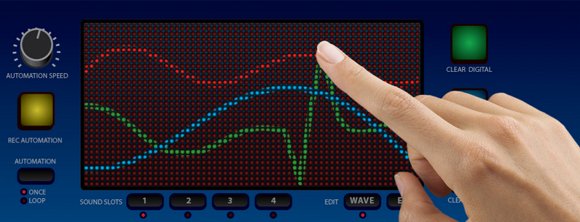
What if you could have any musical technology you wanted – if you had only to imagine something, and it appeared? That was the somewhat insane notion behind the Dreams Competition CDM organized with Rui Penha of Casa Da Musica’s Digitópia research and education program in Porto, Portugal. Earlier this week, Rui and I sat down on the banks of Porto’s famed Douro River with Paulo Maria Rodrigues to pour through stacks of imaginary instruments. Some proposals read like wish lists composed to Santa Claus. Others included exquisite renderings, mock-ups, and even video that made them into serious, near-finished product designs. In the end, we attempted to choose the ideas that seemed the most surprising and original, including a winner that – with some limitation of its scope – would be feasible to actually build.
Far from just being idle fantasy, the winner will be realized by a team of developers as an open-source, free project. And I suspect some of the other entries may yield real tools, too. The line-up offers plenty of indications of what matters to people, and what’s possible. Here are some of our favorite entries out of an impressively high-quality bunch, plus, of course, our winners and the grand-prize selection that will inspire a real project.
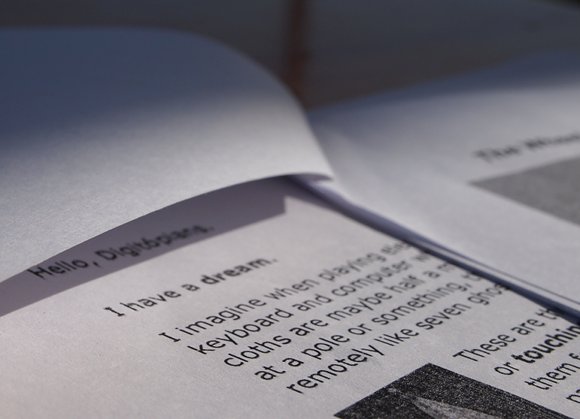
Winner: Dream Synthesizer, Andreas Paleologos
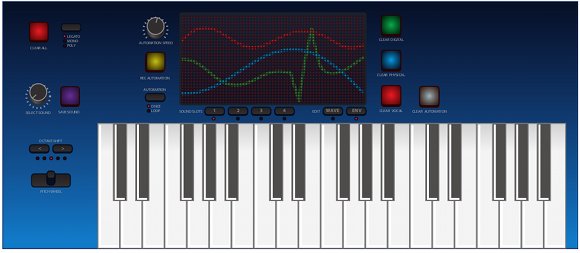
The “Dream Synthesizer” lives up to its name: it embodies a laundry list of ideas about how to make a more interesting synth. Building the whole instrument would be wildly impractical for this project. But one central concept caught our eye as both practical and innovative. The idea is, touch interaction with an array of LEDs creates envelopes that provide a single metaphor for all sound design. Those envelopes aren’t just one paradigm among others: every sound parameter is accessed with gestures.
To realize this idea, we’re directing the Digitopia team we’re assembling for this project to focus on the LED array itself, and working with software to produce sounds. The very limitations of the LED display itself have some appeal, even in this age of multi-touch displays. Furthermore, the constructed physical object should produce a reusable part that other people interested in building their own hardware can reuse. Mapping different software synthesis methods, all built in free software, to touch gestures means the sound side should be reusable, too.
Making a project “free and open source” isn’t just about a license; it’s about choosing something that could be a building block for a wide range of ideas, and making that building block as usable and friendly – from engineering to documentation – as possible. Here’s how Andreas describes his concept, the spark that most inspired us:
My Dream Synthesizer has 3 sound modules that together generate the sound.
Digital Sound Module.
Physical Sound Module.
Vocal Sound Module.
They’re high-quality software modules with a lot of identity. The sound is constantly routed through all three
sound modules, whether generating sound or silent.
It has a big Low Resolution LED screen, covered with a transparent high resolution multi touch film for on
screen interaction with support for up to 3 fingers.
Draw the waveform on the screen and get instant control of the sound.
Use one finger to manipulate the Digital Sound Module.
Use two fingers to manipulate the Physical Sound Module.
Use three fingers to manipulate the Vocal Sound Module.
The envelope is basically ADSR, but with looping sustain. Draw your envelope curve.
You can record and automate all waveform and envelope changes making really complex sounding sounds
with just a finger stroke, recording your particular timing.
Select whether all automation should be triggered once or whether it should loop.
There are more details in the proposal we’ll share soon. And since the project is open, it’s one I hope that we’ll share with the CDM community on an ongoing basis, including getting reactions and ideas as the project is implemented.
By the way, check out Swedish-born, Norwegian-resident Andreas’ artist site, Cuckoo — cool stuff:
http://cuckoo.no/

First Runner-Up: Odu, Nicole Weber
Nicole Weber’s (Germany) Odu was probably the most stunning design work in the lot, including a full physical mock-up and UI design concepts. It’s an unusual combination of physical interface and Web-based sonic engine. On the Web side, users find sample content through a browser interface. On the physical side, a handheld interface turns those samples into tangible objects for manipulation and performance.
Nicole describes her “modular” project thusly:
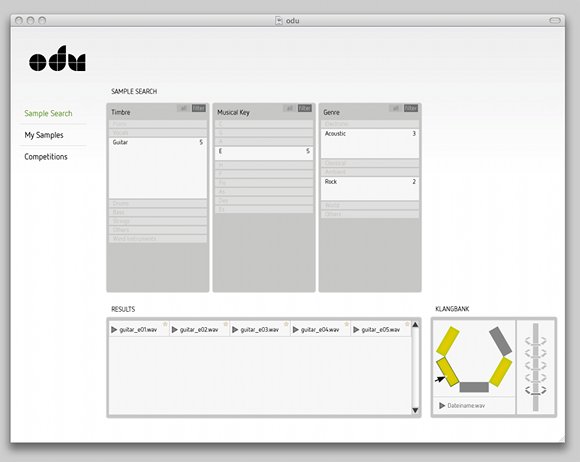
programmer
- With the programmer the user is able to program the controller with samples
- Ships with a sample archive, e.g. created in collaboration with freesound.org or similar
- The user is able to archive and search own samples
- Optional community feature like competitions are provided via the software interface

base
- The base has all the basic features like USB connection, volume and connection ports for effects or other modules
- Integration of sensors in the controller body, e.g. tilt sensor or accelerometer
See her full proposal:
http://topotropic.de/odu
Honorable Mention: Fabric Ghost Controllers, Tycho
Tycho (Germany) sent what was perhaps the most evocative idea. It’s one I hope actually will be realized, but I think one that involves very specific skills. (Our friends the Grant Sisters of felted signal processing have been working on this very problem.) Tycho writes:
I have a dream.
I imagine when playing electronic music live I have sort of a display beside keyboard and computer where seven colored silk scarves are hanging. The cloths are maybe half a meter long, they are square and fixed with their center at a pole or something, their four corners loosely hanging down. It looks remotely like seven ghosts in a row. You get the picture?These are the scarf ghosts controllers! Blowing against the scarves or touching them of fanning at them, maybe even squeezing them for extreme results shows that all seven of them control parameters of the actual sound(s) playing.
I do sleep concerts with very very low volume electronic music in Berlin, Germany. I believe such a “silk scarf ghost controller” would be perfect to accompany my music. During my nocturnal seven hour concert (plus some wake up music) I refer to (and sort of musically render) the seven chakras––so I would choose the number seven and the six rainbow colors plus white for the “ghost controller”.
But can a cloth be a controller? I learned of a Doepfer device that transforms a signal of 0 to 5 volts into the MIDI range. Unfortunately I have no idea how to make a scarf turn out volts when blown at or touched or squeezed. Could you work in a metal wire or something? Plug in little invisble batteries?
I had the idea just a few days ago when I heard of your competition. Maybe you would like such a beautiful and subtle “ghost controller” as well. I had even the vision of using it as sort of wind chimes: hang it in a breeze with my equipment rigged up in nature and let it produce generative sounds.
Its main purpose is being a live controller though that maybe look like decoration at first but turns out to affect the sounds and music. (As such it’s naturally highly lightweight and portable: Just fold the scarves.) They maybe even interact when one scarf touches another.
And imagine taking the pole into your hand and swinging it gently all seven the scarves flapping in the air! What a finale!
More Terrific Ideas
There are really too many interesting proposals to list here, but just to give you a taste:
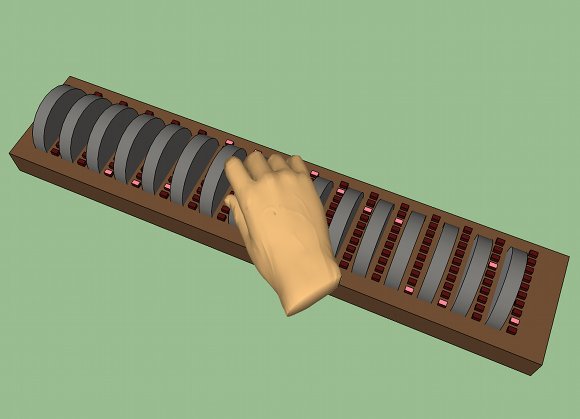
The Wheel Array and the Ball Array, Stefan Blixt (Sweden): Blixt proposed a kinetic interface involving physical wheels. The idea is novel and a tangible contrast for the increasingly-minimal digital interfaces in our world.
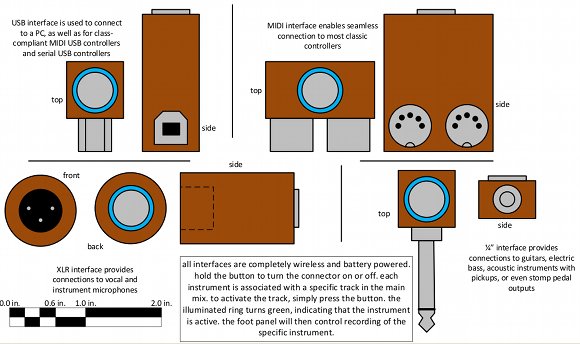
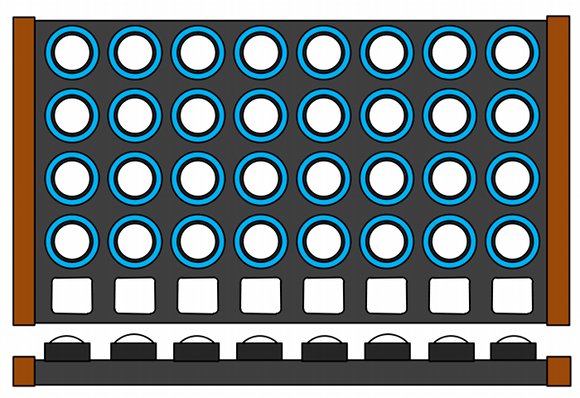
Vitus, Michael Oneppo (USA): Vitus is a “controller” suite of connected, wireless objects.
each performer has a foot panel that controls expression, recording, looping, and effects for his or her performance. through the panel, the performer can enable or disable effects, modulate parameters of the effects, and mix up to four loopable performance clips on the fly.
a number of different wireless connections are provided that allow any microphone, guitar, keyboard controller, or other instrument to be wirelessly connected to the system. in addition, these interfaces provide a one button control for activating the instrument for recording and looping with the foot panel.
finally, a main controller panel is available for the controllerist/mixer of the group. this unit provides a master view of all performers’ clips and settings, and also allows the performer to manipulate these clips to make unique mixes. the interface is an array of hybrid button knobs, which present the performer with endless possibilities and configurations. the panel instantly slices any clip into eighth notes segments that can be triggered in monome-style phrasing across the button/knob grid.
all devices are truly wireless, eliminating any messy cords and freeing the performers. being battery powered, each unit recharges inductively through a storage case that can plug into any outlet.
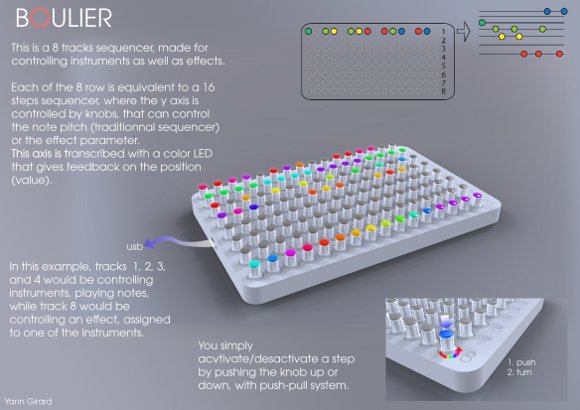
Boulier, Yann Girard (France): Boulier has an ingenious take on how to maximize musical functionality in an array of encoders: use color to denote pitch. Someone may have thought of this before, but the execution is lovely.
LUM from Alfredo Duarte on Vimeo.
LUM, Alfredo A. Duarte Jorquera (Chile) is already, in this mock-up demonstration video, a compelling demonstration of the use of the Sony PS3 Move controller for music. Max Mathews, maker of the Radio Baton, would be proud. I hope Alfredo continues with this project, because I think he’s got a clear vision of how it can work. Updated: that’s an actual demo, so the work has already begun! Go forth!
And the rest…
Jacob Adler (USA) easily wins the honorary Luigi Russolo Award for craziest idea. I think you can agree from the first line:
I want to turn a mountain into a giant organ.
In the millennia-old tradition of organ building, I propose to develop a new kind of instrument – one constructed from powerful train horns and heard in an open desert space. The performer of such an instrument will actuate the valves of multiple air compressors remotely through a digital signal processing program and midi keyboard controller (when an E is pressed, the corresponding horn will sound). The harmonic richness of train horns are beautiful and I believe they can be used to create a new kind of music in
vast spaces. The instrument will be mobile and may be installed in any natural, open space for a series of concerts. One ideal location for this instrument is the south face of Papago mountain in Phoenix, AZ – the
mountain itself is visually beautiful and the park is acoustically ideal.
With a rank of 48 horns (corresponding to four musical octaves), free community concerts of new and old music will be performed. Every stage of the project should be documented through digital video, audio, and photos.
Throughout the organ-building process there will be many issues that will need to be resolved such as power/air-pressure requirements, acoustics in relation to topography, tuning, scaling, voicing, shape of the pipe/horn body, aesthetics of the organ case (if any), and design of the overall instrument. I have a background in working with pipe organs (performing and maintaining), and I would love to work in close collaboration with engineers and musicians. Visually, I would like to base the design of the instrument
after a famous antique organ case in Alkmaar (Netherlands) – the Schnitger Organ in St.
Laurenskerk<http://upload.wikimedia.org/wikipedia/commons/6/62/Alkmaar_organ.jpg>.
However, the design and materials used will harmonize organically with the desert landscape.
At the opposite end of the spectrum, Steppophonic Looperformer, Per Boysen (Sweden) is a very practical-looking approach to step sequencing, and is labeled “please steal this!” It’s well within the range of things readers here could accomplish, so perhaps take the creator’s invitation — write back with the results!
Other ideas, like an OSC sequencer or modular musical/MIDI hardware seem like things that are destined to happen, even if this isn’t quite the forum for those problems.
A big thanks to everyone for compelling, creative contributions. If you have any more ideas or questions, if you missed this round and want to continue the conversation, the grand project of dreaming up the future of music tech is an unending one.